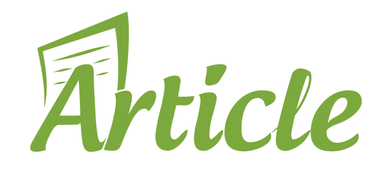
What Are The Benefits Of Eco Friendly Packaging ?
Food packing boxes are essential containers to store, transport, and protect various food products. As a key component of the food packaging industry, they ensure food stays fresh, safe, and convenient for consumers. Food packing box come in all shapes, sizes, materials, and styles that suit various culinary needs, ranging from takeout services and delivery deliveries to retail packaging services or meal prep solutions.
Food packaging products play a pivotal role in modern food distribution systems. They ensure safe transport from manufacturers to retailers and restaurants directly to consumers’ homes – making takeout, delivery, and ready-to-eat meals more accessible than ever.
Primary Goal of Food Packing Boxes
Primary goal of food packing boxes
Food packing boxes serve a crucial purpose: protecting the quality and safety of food products while improving their presentation. From cardboard pizza boxes to plastic clamshells for salads or foil-lined containers for hot dishes, all are designed specifically to withstand the rigorous demands of the food industry while remaining durable, leakproof, and capable of maintaining temperature/freshness/temperature controls of their contents.
Food packaging boxes are integral to reducing food waste by protecting food from contamination and spoilage during storage and transportation. They also facilitate modern lifestyles by offering takeout and food delivery services that allow individuals to enjoy restaurant-quality meals from the convenience of their own homes.
Sustainable and Environmental Footprint
Choice of food packaging box can greatly impact sustainability efforts, with many companies opting for eco-friendly materials and designs to reduce their environmental footprint. As consumer awareness of sustainability grows, the food packaging industry continues to adapt its practices by adopting more innovative yet eco-friendly practices into its practices.
Food packing boxes are essential tools in the food industry, not only as practical containers but also as branding opportunities and contributors to food safety and sustainability. With their versatility in design and material selections.
Global Sustainability Goals
Food packaging products are integral to the food industry and are designed to protect, preserve, and present various food items. These products come in all imaginable forms – materials, shapes, and sizes, all catering to individual food types and specific packaging requirements. Food packaging plays a key role in providing products with safety, freshness, and convenience and serving as a marketing tool while simultaneously meeting sustainability requirements.Food packaging products maintain quality and safety from production through consumption, acting as an antidote against contaminants such as moisture, oxygen, and light that threaten their integrity and shelf life.
Environmental Implications of Packaging
Food packaging products help preserve items and play an integral role in their presentation and branding. Attractive and informative packages can draw consumers’ eyes toward products they may purchase while conveying crucial information such as nutritional facts, ingredient lists, or cooking instructions – helping them make better-informed choices regarding their food.
In recent years, food packaging industry leaders have increasingly emphasized sustainability. More manufacturers are exploring eco-friendly materials and designs to reduce packaging’s environmental impact, such as using recyclable, biodegradable, and compostable materials while minimizing excess packaging and encouraging responsible disposal practices.
Consumer Preference
Food packaging products play a pivotal role in the food industry, providing numerous advantages beyond simple containment. Their multifaceted benefits extend far beyond mere containment – contributing to food safety, quality, consumer satisfaction, and sustainability concerns – not to mention branding opportunities and sustainability initiatives. As food trends and sustainability goals change, packaging will become even more innovative and eco-friendly – mirroring consumer preferences and global sustainability goals.
Advantages of food packing box
Food packing boxes provide numerous advantages in the food industry, aiding the preservation, presentation, and distribution of various food products.
- Food Safety: Packaging boxes provide food with extra safety by shielding it from contaminants like bacteria, dust mites, and insects that could otherwise come into contact with it. They create an impenetrable physical barrier against harmful elements from entering into contact with it.
- Extended Shelf Life: Proper packaging can extend the shelf life of perishable food items by creating an environment that reduces exposure to oxygen and moisture, which can contribute to spoilage and deterioration.
- Freshness Preservation: Food packaging boxes are designed to preserve freshness by limiting exposure to air and light – particularly crucial when dealing with products such as fruits, vegetables, and bakery items.
- Convenience: Packaging simplifies food storage, transport, and consumer handling. Portion-controlled packaging with resealable options and microwave-safe containers further add convenience for users
- Protection during Transit: Food packing boxes are specially designed to withstand the rigors of transportation, protecting food products against damage and spillage during their journey and ensuring they arrive at their destinations undamaged.
- Product Visibility: Windowed packaging allows consumers to see inside, which can play an essential part in making purchasing decisions. Seeing what’s inside can indicate product quality, that’s useful when shopping.
- Branding and Marketing: Packaging can be an invaluable marketing tool. Eye-catching designs, logos, and labeling can create brand identity while simultaneously drawing customers in.
- Information Communication: Packaging provides an effective platform to convey essential consumer information such as ingredients, nutritional facts, allergen warnings, and cooking instructions – helping them make more informed decisions. This facilitates informed decision-making.
Advantages of Biodegradable Food Packaging
Biodegradable food packaging aims to minimize its environmental footprint by decomposing more quickly, returning organic matter to the earth as organic matter. Compared with plastics that persist for centuries in the environment, biodegradable materials decompose much faster.
- Eco-Friendliness: Biodegradable materials typically derive from renewable resources such as plant-based plastics (bioplastics), paper, and compostable polymers with lower carbon emissions than their fossil fuel counterparts.
- Reduced Plastic Pollution: Biodegradable packaging can help address global plastic pollution by breaking down into natural components without leaving behind microplastics or waste accumulating over time.
- Waste Diversion: Biodegradable food packaging can be composted with organic waste, diverting it away from landfills and incineration facilities to ease the burden of waste disposal infrastructure.
- Consumer Appeal: Many consumers with environmental priorities prefer products packaged in biodegradable material, making sustainable practices attractive for businesses that adhere to them.
- Regulatory Compliance: Biodegradable packaging can help businesses meet environmental regulations and sustainability goals more easily while reducing environmental impact.
- Innovation: Ongoing research and development in biodegradable materials result in innovative packaging options that balance functionality, durability, and environmental considerations.
- Reduced Dependence on Fossil Fuels: Biodegradable materials can help reduce our dependence on fossil fuels, contributing to reduced greenhouse gas emissions and supporting more sustainable supply chains.
Conclusion
Given today’s environmental and consumer demands for sustainable practices, biodegradable food packaging stands out as an innovative step toward eco-friendliness in the food industry. Food packing boxes and products continue to serve an essential function in preservation and presentation, all while adapting to meet evolving consumer expectations and sustainable objectives.



Average Rating